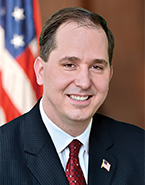Norris: Budget Is Another Example Of What’s Wrong With NYS
A Legislative Column from Assemblyman Mike Norris (R,C-Lockport)
Before the COVID-19 crisis, New York had a serious “tax-and-spend” problem. Now, during the pandemic recovery period, is certainly not the time to go on a reckless spending spree that will ultimately further hinder the ability of our citizens to survive and remain in New York State. Unfortunately, Albany’s downstate-driven leadership simply could not help themselves and continued to accelerate an already speeding tax-and-spend freight train which is clearly heading towards the edge of a cliff.
Breaking the state’s 2 percent annual spending cap, this budget increases spending by more than 6.6 percent. That’s an increase of $34 billion. Let that sink in. This is the most expensive budget in state history at over $212 billion in overall spending and will raise taxes permanently by more than $4.5 billion. Our state debt is the second highest in the country, and this budget only increases it further, indebting even more generations of New Yorkers...or whoever is left behind to turn out the lights.
It’s sadly true. Over one million New Yorkers have already left since Governor Cuomo took office because of overspending and “tax-and-spend” policies. As they have left, they have taken with them jobs, their tax revenue and the New Yorkers left behind have been asked to pony up a greater share of their incomes to make up the difference. While the financial cost is difficult to bear, the human cost is crushing. Families are broken-up, lives are changed forever. The pandemic exposed the new American diaspora in ways that technology will never make up for. And budgets like this are directly responsible for it.
This budget was an opportunity to set our state on a new fiscal course. With $12.5 billion coming in from Washington, we could have passed a balanced budget this year but also make one-time investments in infrastructure, broadband connectivity, or pay down debt to help address the high cost of living in our state to curb outmigration.
Instead, downstate-driven leaders at our state Capitol chose to create a new multi-billion program to provide unemployment payments worth more than $15,000 per individual to undocumented persons. They also chose to strip away even more of your local control when it comes to the taxing of massive energy projects like wind or solar farms in local jurisdictions. For all the reasons outlined above, I voted against the state budget in its entirety.
However, having been appointed as a member of the Joint Budget Conference Committee on Transportation in addition to my role on the Assembly Ways and Means Committee, this year I had a greater opportunity to serve during the budget process. Having worked very hard on key priorities for our community I am pleased to share that many of them have been included in the final budget agreement, including:
- INFRASTRUCTURE: The Consolidated Local Street and Highway Program (CHIPS) will be seeing its first funding increase in nine years with $100 million in new funding. The Extreme Winter Recovery Program will also get another $100 million.
- BROADBAND: I was a sponsor of the Comprehensive Broadband Connectivity Act and worked across the aisle with my colleagues to get this bill passed in 2020. Unfortunately, the governor did not sign the bill into law at the time. However, we were able to persuade him to include it in the final negotiations and it was included in the final budget.
- LIBRARIES: Many of our libraries are historic and in need of capital improvements, but Albany has not given this funding the attention it needed. I’ve worked hard to raise awareness for this year and an additional $20 million was included in the final budget agreement. This nearly doubles their funding allotment.
- VETERANS: One of the most successful programs to help veterans is the Joseph P. Dwyer Veterans Peer Counseling Program. The governor proposed cutting the program, but not only were we able to restore it, nearly half a million dollars more in funding was added to further the mission of this wonderful program.
- DEVELOPMENTAL DISABILITIES: The budget also expands services for people with developmental disabilities in terms of day services and family support. All of the governor’s proposed cuts were restored and new funding was also added to this vulnerable population.
- WORKFORCE DEVELOPMENT: As the chair of the Assembly Minority Learning for Work Task Force, I am very pleased to see workforce development initiatives similar to those championed by our task force included in the budget.
I’m glad to report we have made progress, but quite frankly these appropriations are a drop in the bucket in this reckless spending plan. The bottom line is that the budget over spends in unsustainable ways and further divides upstate and downstate in its spending priorities. Ultimately this will continue driving people out of state, hurting everyone in the future.
